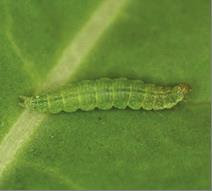The Prairie Crop Disease Monitoring Network (PCDMN) represents the combined effort of prairie pathologists working together to support in-field disease management in field crops. Information related to trajectory events based on forecast and diagnostic wind fields and cereal rust risk is experimental, and is offered to the public for informational purposes only. Read the OVERVIEW describing the collaborative nature of this effort and the methods employed.
Wind trajectory and cereal rust risk assessment and need for in-crop scouting in the Prairie region, May 19-25, 2020
1. Pacific Northwest – There were a relatively high number of reverse wind trajectories that passed over the PNW region and into the prairies. Locations with the highest number of days with reverse trajectories from the PNW included: Beiseker (4), Lethbridge (6), Olds (3), Sedgewick (3), and Vegreville (3), AB; Gainsborough (3), Grenfell (3), Kindersley (3), North Battleford (4), Saskatoon (3), Tisdale (3) and Unity (3), SK; and Brandon (3), MB (Table 1). However, currently there is limited stripe rust development in the PNW, cool dry conditions in some Prairie regions, and early stages of Prairie crop development. Thus, as of May 25, 2020 the risk of stripe rust appearance from the PNW is limited and scouting for this disease is not urgent. However, locations with 3-6 reverse trajectory events from the PNW may be at a slightly increased stripe rust risk, especially for winter wheat crops.
2. Texas-Oklahoma corridor – Currently, there is limited leaf and stripe rust development in this corridor. Moreover, there were a relatively low number of recent wind trajectories from this area for most prairie locations, cool dry conditions in some Prairie regions, and early stages of Prairie crop development. Thus, as of May 25, 2020 the risk of leaf and stripe rust appearance from the Texas-Oklahoma corridor is limited and scouting for these diseases is not urgent. It should be noted that crops in Texas are at or approaching maturity with harvesting occurring in many areas. In Oklahoma the wheat crop is progressing towards maturity in most regions of the state except for the northwest, while rust development is generally limited. Thus, this region will progressively represent a less critical source of cereal rust inoculum for movement into the Prairie region from late May and throughout June 2020.
3. Kansas to Nebraska corridor – Currently, there is some leaf and stripe rust development in Kansas, but not in Nebraska. Moreover, there were a relatively low number of recent wind trajectories from this area for most prairie locations, cool dry conditions in some Prairie regions, and early stages of Prairie crop development. Thus, as of May 25, 2020 the risk of leaf and stripe rust appearance from the Kansas-Nebraska corridor is limited and scouting for these diseases is not urgent. However, there were Prairie locations with 3-6 days with reverse trajectory events from the Kansas/Nebraska region for May 19-25, 2020 and these included: Gainsborough (6), Grenfell (3), Naicam (3), Regina (4), Yorkton (3), and Tisdale (3), SK; Brandon (4), Carman (4), Dauphin (3), Portage (3), Russell (5), and Selkirk (3), MB. Thus, rust risk may be slightly increased for these areas, especially for winter wheat crops.
4. Where farmers or consultants noticed stripe rust development on winter wheat in the fall of 2019, it is recommended to scout winter wheat fields that have resumed growth this spring. Scouting is especially critical where the variety being grown is susceptible to stripe rust. Currently, there are no early spring reports of stripe rust on winter wheat.

































